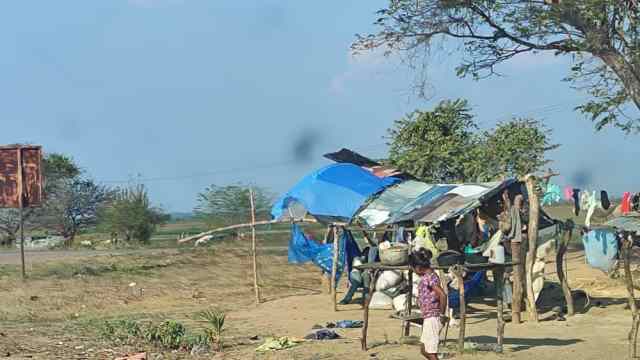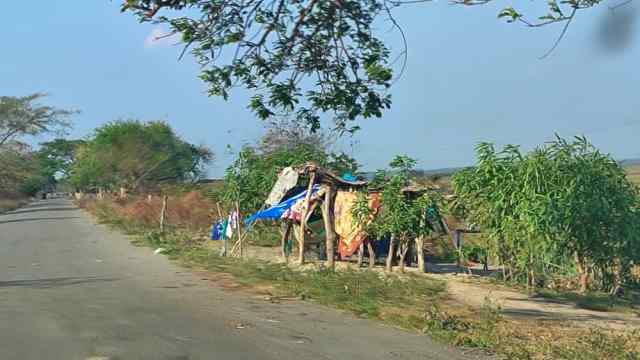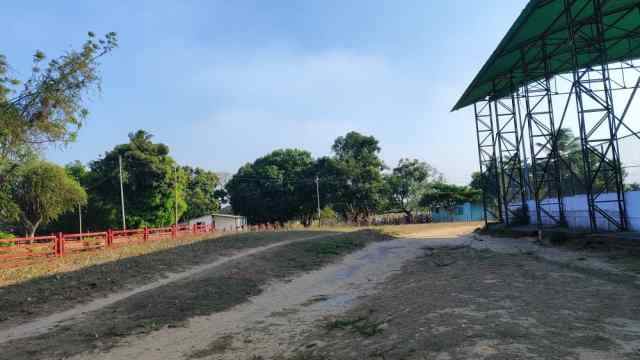
The socioeconomic situation of the indigenous communities in El Yagual and Guachara, Achaguas Municipality in the Apure State, is precarious due to the lack of decent housing, healthy food, optimal health and efficient public services. Apure is a frontier state in the southern Venezuelan plains.
By lapatilla.com
The indigenous people of San José Capanaparo confessed in the ‘Plaza de Guachara’ (central; square of the township) that they are dying of hunger. “No one helps us, it’s not like before when the Government helped us, they gave us food and the food was delivered to the patio of our houses. Now to buy a bag of food, we have to come here on foot. The cars, the engines are gone, not even the commissioners visit us,” said an elderly indigenous person from the area.
The older adult mentions that there are “many sick people, because they lack food and medicine (…) Nothing is like before,” he says in the hope of being heard by the authorities.
“We are suffering, because hunting is not possible like before, now we don’t have it. In summer, the river is too far away to carry the fish. It (the town) deserves a ‘bomba’ (water pump) to be able to live better,” said another indigenous person interviewed, who expressed his desperation, since he has a family and does not have the financial resources necessary to support it.
Deaths from starvation

A group of indigenous people from the El Rosario community, located on the banks of the Capanaparo River, have set up their itinerant homes near the highway for about three years under precarious conditions. They allege that they are fleeing violence and recruitment by irregular armed groups.
Given this situation, the Government supposedly intends to relocate them to the Santa Juana ranch, where they hope to provide assistance, said the Single Authority of Indigenous Peoples of Apure State.
“Indigenous communities are underserved. In Las Campanas, at least four children have died because there is no food to feed them. They get sick and die,” said an aboriginal from the Las Campanas community.
José Miguel Páez, an indigenous person from Guachara, considers the deficiencies in the electricity and water services in this area of Bajo Apure to be serious problems for the indigenous communities.
“Power goes out all the time, it then lasts two to four hours. Sometimes we spend a night or the whole day without electricity, sometimes we spend two to three days without power. The person in charge of turning on the (water) pump does it very late, from 9:00 to 10:00 in the morning. They should do it at 5:00 in the morning, because there are people who work in the schools,” Páez told lapatilla.com.
Regarding the provision of water service, the indigenous residents of Guachara, when consulted in their homes, stated that they can go more than a day without water.
“When I worked in the dining room, there was no shortage of water, now there is. The water tank is located in a low area and the homes are in a high area. People who have a dynamo leave others without water,” Páez said worriedly.
Oblivion

Carlos Díaz, a resident of the community of Palmarito, where almost 2,000 indigenous people currently live, reports problems of all kinds. “The food arrives every three months, the road is useless, the homes are at ‘half-mast’, no one from the Government shows up there, no one visits anyone, they have forgotten us. We live off of fish in the river, we are barely surviving,” he noted.
Díaz emphasizes that the Guachara outpatient clinic “is useless” because it does not have sufficient medical supplies to attend to emergency cases. “There are no nurses, there is nothing, they left us like the ‘guayabera de veguero’ (saw that means ‘outside’, forgoten, excluded),” said Díaz.
The healthcare days sponsored by the authorities are carried out every two or five months due to the remoteness and complicated access to reach these territories of indigenous peoples. Only in some emergency cases, patients are transferred to the Pablo Acosta Ortiz Hospital (HPAO, in Achaguas) .
An indigenous woman from Fruta de Burro, Achaguas Parish, who asked to keep her name confidential for fear of reprisals, complains about the difficult access to this indigenous community, especially during the ‘winter’ (rainy season), because the road is “unusable and filled with water”.
She demands that the authorities repair the roads before the arrival of the rainy season. She also affirms that the water service in Fruta de Burro is poor. “It arrives in dribs and drabs,” she said despite the fear in the area of offering information on the subject.
Official figures
According to a census carried out from August to November 2023, around 22,316 indigenous people live in Apure State, grouped into 5,373 families of the Cuiva, Pumé, Jivi and Eñepa ethnic groups.
During the first quarter of last year, around 86 indigenous people were treated at the Pablo Acosta Ortiz Hospital and three deaths were reported. In the first week of January 2024, nine indigenous births were registered, highlighted Euclides Rodríguez, Sole Authority for Indigenous Peoples in a radio program.
Despite this difficult situation, the Government plans to carry out a strategic plan in the: social area, infrastructure, agricultural and livestock production in the mission bases in favor of the indigenous communities, located in the Biruaca-Achaguas axis. The plan would be executed between August 2023 and 2028.
They plan to incorporate 176 indigenous communities with a greater presence in the Pedro Camejo, Achaguas and Rómulo Gallegos municipalities (cuiva, jivi and pumé). Out of this total, 22 communities are settled in the Achaguas Municipality, where there is sandy loam soil inadequate for significant corn production, but is conducive to diverse livestock production, in order to promote independence within the native communities.
In Guachara, criminal gangs dedicated to theft and cattle rustling have proliferated, and are allied with armed groups that trade the meat in different areas of Bajo Apure, stated the indigenous people consulted for this journalistic work.

